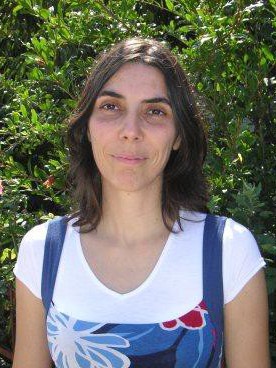resumo
The efficiency of organic photodetectors and optoelectronic devices is strongly limited by exciton diffusion, in particular for acceptor materials. Although mechanisms for exciton diffusion are well established, their correlation to molecular organization in real systems has received far less attention. In this report, organic single-crystals interfaces were probed with wavelength-dependent photocurrent spectroscopy and their crystal structure resolved using X-ray diffraction. All systems present a dynamic photoresponse, faster than 500 ms, up to 650 nm. A relationship between molecular organization and favorable exciton diffusion in substituted butyl-perylenediimides (PDIB) is established. This is demonstrated by a set of PDIBs with different intra- and interstack distances and short contacts and their impact on photoresponse. Given the short packing distances between PDIs cores along the same stacking direction (3.4-3.7 angstrom), and across parallel stacks (2.5 angstrom), singlet exciton in these PDIBs can follow both Forster and Dexter exciton diffusion, with the Dexter-type mechanism assuming special relevance for interstack exciton diffusion. Yet, the response is maximized in substituted PDIBs, where a 2D percolation network is formed through strong interstack contacts, allowing for PDIBs primary excitons to reach with great efficiency the splitting interface with crystalline rubrene. The importance of short contacts and molecular distances, which is often overlooked as a parameter to consider and optimize when choosing materials for excitonic devices, is emphasized:
palavras-chave
FIELD-EFFECT TRANSISTORS; ORGANIC PHOTOVOLTAIC CELLS; SEMICONDUCTOR THIN-FILMS; SOLAR-CELLS; QUANTUM EFFICIENCY; PERFORMANCE; NANOSTRUCTURES; GENERATION; TRANSPORT; SOLIDS
categoria
Science & Technology - Other Topics; Materials Science
autores
Pinto, RM; Gouveia, W; Macoas, EMS; Santos, IC; Raja, S; Baleizao, C; Alves, H
nossos autores
agradecimentos
The authors thank FCT-Fundacao para a Ciencia e Tecnologia for financial support with grants SFRH/BPD/84820/2012, PTCD/QEQ-SUP/1413/2012, IF/00759/2013, IF/01088/2014, and UID/NAN/50024/2013. This work was developed within project Mais Centro-PORC under contract CENTRO-07ST24-FEDER-002032.


